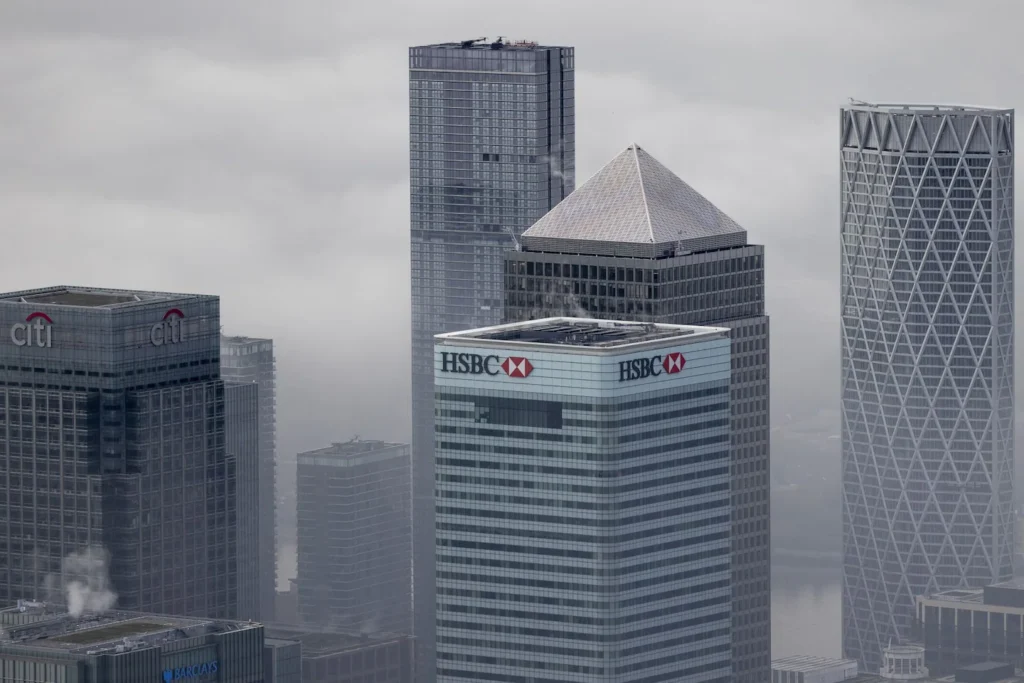
Two decades later, the buildings now stand as monuments to a bygone age. The global ambitions of both HSBC and Citigroup have been pared back, replaced by a narrower focus on core markets. HSBC has reduced the number of countries and territories in which it operates to 64 from 88. Its largest shareholder, China’s Ping An Insurance (Group) Co., has been agitating for a spinoff of its Asia operations. Last year, Citigroup announced its exit from 13 markets across Asia, Europe and the Middle East and is trying to sell its Mexican business, Banamex.
The shift in strategy of the two banks tracks the arc of globalization.
Back in 2002, HSBC coined the tagline “the world’s local bank” to describe its strategy. In the prior 10 years, it had made a series of acquisitions – in the UK, Brazil, US, France and Mexico – as part of a “three-legged stool” strategy to build a presence across Asia, North America and Europe.
Founded in Hong Kong in 1865, it outgrew its domestic market and began to invest excess capital abroad. The strategy was the brainchild of Michael Sandberg, its chairman between 1977 to 1986. “If you stand still these days you are in fact moving backwards,” he said.
The strategy followed the path laid by Citi. In 1967, Citi promoted Walter Wriston, head of its overseas business, to president. Wriston had already made clear his ambitions at a dinner a few years earlier: “The plan in the overseas division was first to put a Citibank branch in every commercially important country in the world. The second phase was to begin to tap the local deposit market by putting satellite branches or mini-branches in a country. The third phase was to export retail services and know-how from New York.”
Like HSBC, the bank deployed capital all over the world. At the peak, it had operations in more than 140 countries. (The United Nations currently has 193 member states).
By the time they moved into their new offices, HSBC and Citi were the most globally diversified of the major international banks. “We fought like cats and dogs,” said William Purves, who succeeded Sandberg as chairman, “but in some ways we were quite close.” As global trade ballooned, the banks benefited as financial intermediaries, riding the coattails of the post-Cold War global economic integration.
But with the global financial crisis in 2008, the prevailing model of globalization began to unwind. As countries turned inwards and regional trading blocs became more dominant, the expansion of global value chains slowed. Having risen in a straight line from 29% of global gross domestic product in 1993, goods trade – the sum of merchandise imports and exports – peaked at 51% in 2008. (In 2021, it was down to 46%.)
As with many important turning points, the shift wasn’t initially obvious. Citi promoted a strategy to become an “urban bank, serving customers in the top 100 cities around the world.” Its post-crisis CEO, Vikram Pandit, argued that “people in these bigger cities have much more in common as customers than they do necessarily by nationality: from a banking perspective, São Paolo has more in common with London than it does with San Juan.” HSBC continued to plaster its “world’s local bank” slogan across jet bridges at major airports until 2016.
But as profitability in their outposts declined and the cost of managing far-flung organizations grew alongside stricter post-crisis regulations, the banks began to shed their global aspirations. Pandit’s successor as CEO, Mike Corbat, exited a number of markets and his successor, Jane Fraser, doubled down, exiting several more, including Mexico, Citi’s largest standalone consumer franchise outside the US.
HSBC was similarly withdrawing from multiple markets. Last year, it sold its French business to private equity firm Cerberus Capital Management for 1 euro. Hong Kong is back to contributing 30% of its loan book, a level not seen in over 20 years.
Now the group faces its biggest test: a call to dismantle what’s left of its “three-legged stool.” Ping An reckons spinning off its Asian business could release $8 billion of capital and create between $25 billion and $35 billion of additional market value. At its interim results presentation earlier this month, HSBC countered that “structural change risks diluting the economics of our international business model.”
But with globalization in retreat, the value of an international banking network is diminished. From its global headquarters in Canary Wharf, HSBC’s global strategy is a throwback to a different age.
More From Bloomberg Opinion:
• Globalization Isn’t Dead, It’s Just More Global Now: Wang Huiyao
• Will Western Banks Walk Away From Russia?: Marc Rubinstein
• HSBC Split Is a Surefire Way to Destroy Value: Paul J. Davies
This column does not necessarily reflect the opinion of the editorial board or Bloomberg LP and its owners.
Marc Rubinstein is a former hedge fund manager. He is author of the weekly finance newsletter Net Interest.
More stories like this are available on bloomberg.com/opinion

